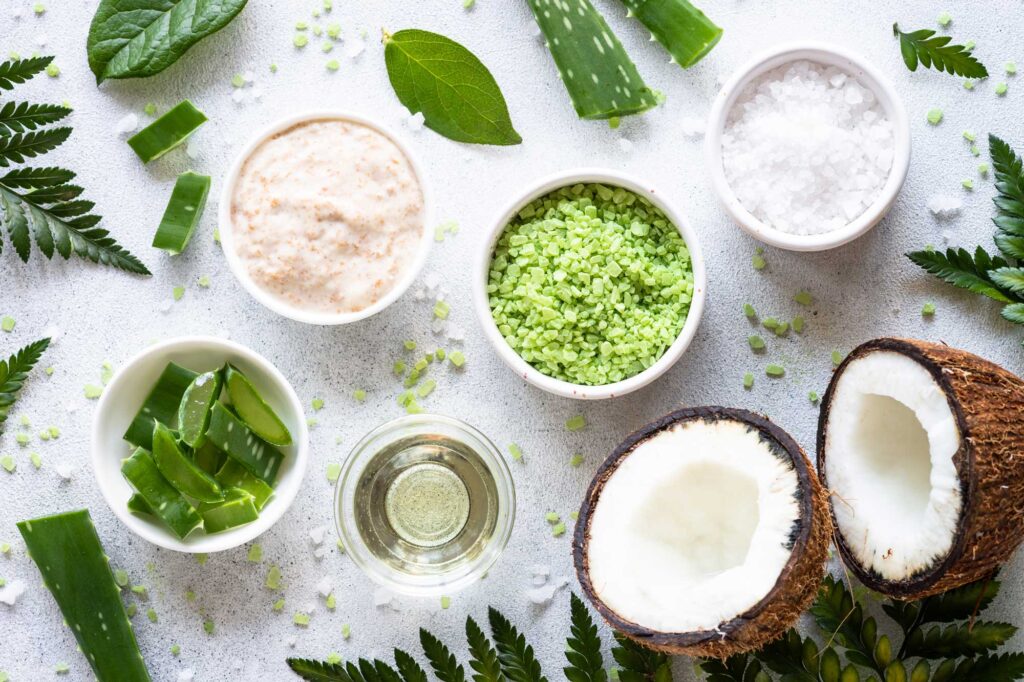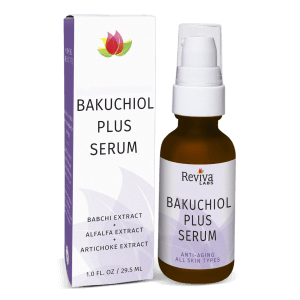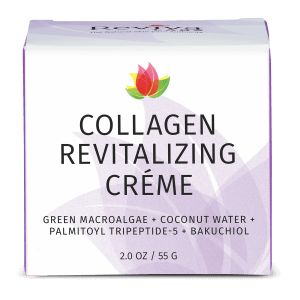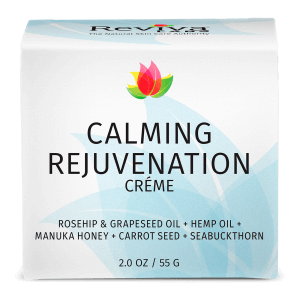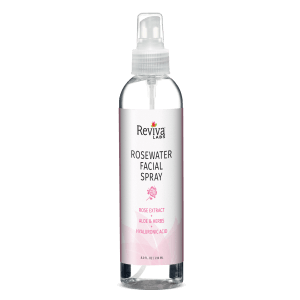Clean Beauty, Natural, Reviva Labs, Skin Care
Why Plant, Seed and Nut Ingredients Dominate Skincare Formulations
When you pick up a bottle of serum, lotion, or cleanser, odds are that the ingredient list reads more like a garden inventory than a chemical lab. From avocado oil and shea butter to green tea extract and hibiscus, plant, seed, and nut-derived ingredients are more than just a natural touch – they’re the foundation of modern skincare. This isn’t a coincidence or passing trend. It’s the result of decades of science catching up with centuries of herbal wisdom.
There’s a reason botanical have stood the test of time. They work. But beyond efficacy, there are deeper motivations – ranging from sustainability and safety to consumer trust – that drive formulators to lean on nature’s apothecary.
Let’s explore why these ingredients reign supreme in skincare – and why their role will only continue to grow.
Nature’s Blueprint for Biocompatibility
Our skin’s structure isn’t all that different from the oils found in certain seeds and nuts. For example, jojoba oil closely mimics human sebum, making it incredibly compatible with our skin. This biocompatibility means that the skin recognizes and accepts these natural oils without triggering irritation or rejection.
Plant-derived oils like avocado, coconut, and argan don’t just sit on the surface – they penetrate the upper layers of the skin, delivering essential fatty acids, antioxidants, and vitamins exactly where they’re needed. These oils often contain high concentrations of linoleic acid and oleic acid, which support the skin barrier and aid in moisture retention.
In fact, avocado oil, included in Reviva Labs’ Nourishing Niacinamide Serum, is a great example of how a single ingredient can do double duty: hydrating dry skin while calming inflammation thanks to its essential fatty acid profile.
Sourcing Clean, Nutrient-Rich Compounds
Seeds are literal powerhouses of nutrients. Think about it: a single seed contains everything needed to grow an entire plant. This makes them rich in bioactive compounds like polyphenols, flavonoids, and essential oils that support skin health.
Hibiscus seed oil, also known as the “Botox plant” in some circles, is particularly valued for its natural AHAs (alpha-hydroxy acids) and ability to improve skin elasticity. It helps brighten dull complexions, soften lines, and promote a youthful glow without the irritation commonly associated with synthetic alternatives.
Botanical extracts like rosemary offer not just antioxidant benefits but also antimicrobial properties, extending product shelf life while protecting skin from environmental stressors. These dual-function ingredients help simplify formulations and reduce the need for synthetic additives.

Consumer Demand for Transparency and Safety
We live in an era where consumers flip bottles over before buying – reading labels, researching ingredients, and expecting clarity. That demand for transparency has shifted the industry toward natural solutions that are not only effective but easier to pronounce and trust.
For many, the appeal of a product with shea butter, chamomile, or aloe vera lies in its familiarity. People know what these ingredients are and often have positive associations with them. In contrast, synthetic names can raise red flags – even if they’re safe. The word “phenoxyethanol,” for example, might sound suspect, but rosemary extract or aloe feels friendly and safe.
Whole Foods Market’s ingredient standards offer insight into how strict guidelines have shaped brand formulations. They actively encourage plant-based and naturally derived ingredients, reinforcing consumer expectations around product safety and environmental responsibility.
Multifunctionality That Streamlines Formulas
In a market that values minimalism – both in packaging and ingredients – plant-derived substances stand out for their versatility. A single botanical extract can hydrate, soothe, protect, and even act as a mild preservative.
Neem seed oil, for instance, not only hydrates but also boasts antibacterial and antifungal properties. It’s why you’ll find it in formulations targeting acne, scalp issues, or sensitive skin conditions. Glycerin, although not exclusive to plants, is most often derived from vegetable oils and acts as a potent humectant, drawing moisture into the skin and keeping it there.
This kind of multitasking power helps formulators cut down on filler ingredients. The result? Cleaner labels, simpler formulations, and fewer chances for irritation or allergic reactions.
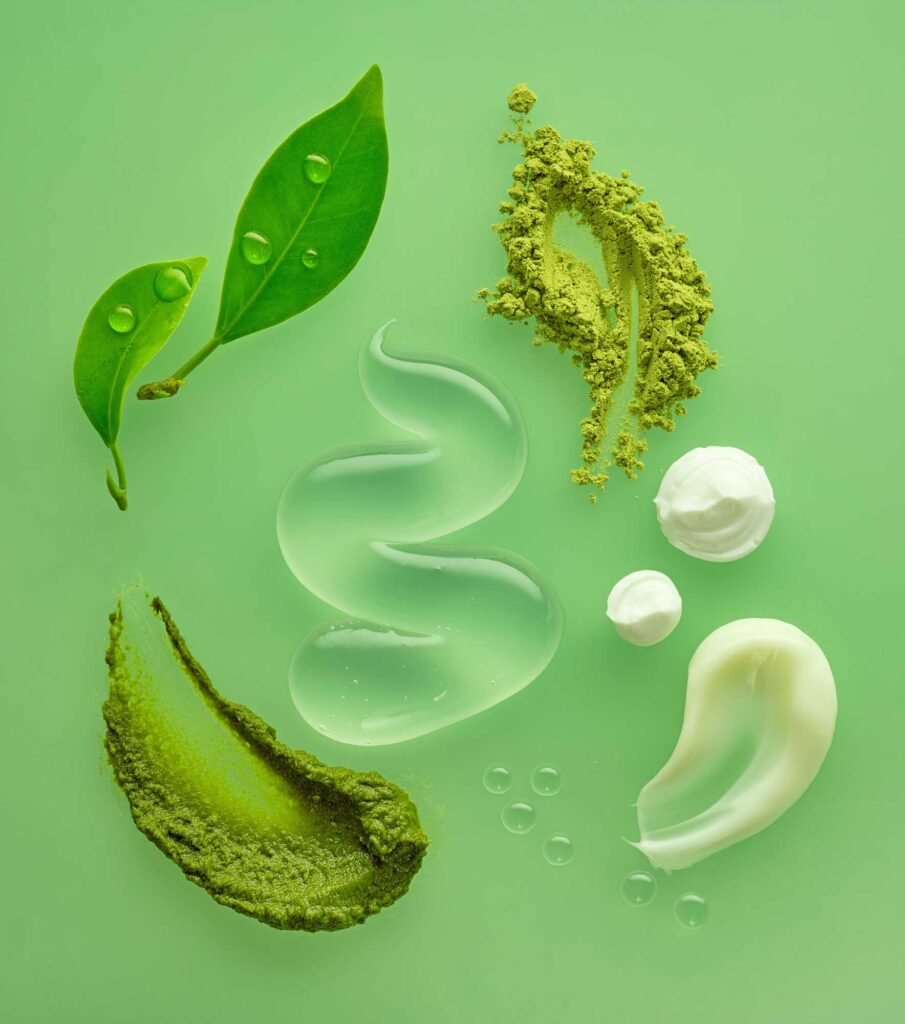
Alignment With Eco-Conscious Formulations
The push for sustainability isn’t just a checkbox – it’s a mission. Formulators and brands are moving toward biodegradable, renewable, and low-impact ingredients. Seeds, nuts, and plants naturally lend themselves to this approach.
Cold-pressed oils, for example, require minimal processing and maintain their nutrient profile without the need for chemical solvents. Compare this with petrochemical derivatives that often come from nonrenewable resources and require significant energy to refine.
In addition to being renewable, plant-based ingredients are often biodegradable, posing less risk to waterways and aquatic ecosystems. This matters more than ever, as scrutiny over microplastics, synthetic UV filters, and harsh preservatives continues to mount.
Evidence-Based Performance Without Harsh Side Effects
We’re not relying solely on tradition anymore – today’s botanical ingredients are backed by studies and lab results. Scientific research continues to validate the performance of plant-based skincare.
Niacinamide, while a synthesized vitamin, pairs beautifully with plant oils like avocado to strengthen the skin barrier. Aloe vera has been clinically shown to reduce redness and speed wound healing. Green tea extract fights free radicals and soothes inflammation. And oils high in linoleic acid help reduce acne breakouts without drying out the skin.
The beauty of these ingredients is their ability to work in synergy. Rather than bombarding skin with isolated chemicals, plant-based formulations often support skin holistically providing hydration, nourishment, and protection all at once.
Ancestral Wisdom Meets Modern Innovation
Long before cosmetic chemists existed, people across cultures were grinding seeds, steeping roots, and extracting oils for their skin. This ancestral wisdom still guides modern skincare practices. What’s changed is the precision.
Thanks to better extraction technologies, cold-pressing methods, and clean processing standards, today’s products harness higher concentrations of active compounds. This means you get the full benefit of something like hibiscus oil or baobab extract without the instability or risk of spoilage that older techniques faced.
Additionally, advanced formulations now allow botanical oils to be micronized, encapsulated, or stabilized to extend shelf life and enhance penetration – bringing together tradition and technology in a way that respects both.
Sensitivity-Friendly by Design
One of the driving forces behind the plant-based shift is the increasing prevalence of skin sensitivity. Pollution, stress, poor diet, and over-exfoliation have left many people with compromised barriers. They need products that soothe, not strip.
That’s where ingredients like oat extract, calendula, and chamomile shine. These botanicals offer anti-inflammatory, calming effects without clogging pores or introducing allergens. When combined with fatty acids from seeds and nuts, these ingredients help fortify the skin’s defenses.
Many synthetic chemicals – particularly fragrances, parabens, and sulfates – can trigger reactions in sensitive skin types. By replacing or avoiding these, plant-based formulations cater to a broader, more reactive audience.
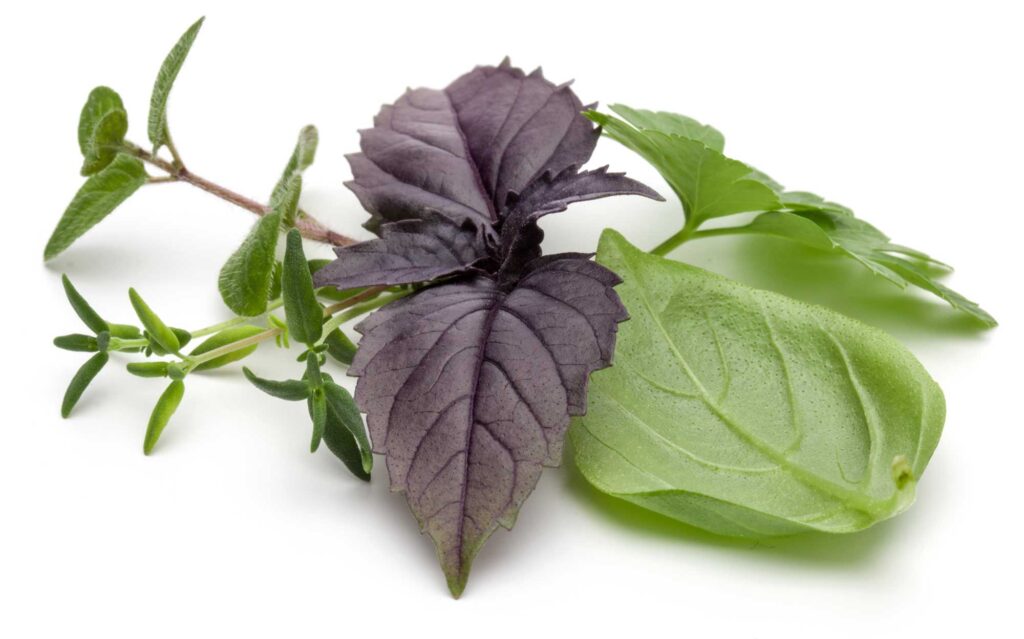
Aesthetic Appeal and Sensorial Satisfaction
Plant-based ingredients don’t just benefit the skin – they elevate the entire experience. Think about the luxurious slip of mango butter, the refreshing scent of cucumber extract, or the glow that comes from a gentle layer of rosehip oil. These textures, scents, and finishes create emotional connections.
Consumers are more likely to build loyalty around products that feel good, smell natural, and deliver visible results. Natural ingredients bridge science with indulgence, turning a basic routine into a daily ritual of self-care.
Meeting Retailer and Regulatory Demands
Retailers like Whole Foods have played a major role in pushing the industry toward cleaner, more natural ingredients. Their standards disallow numerous synthetic or controversial ingredients while prioritizing plant-based alternatives.
This retailer pressure has spurred innovation in natural preservatives, surfactants, and emulsifiers derived from sugar, coconut, or corn. It also influences labeling and packaging trends, prompting brands to pursue certifications and third-party testing for ingredient purity and sourcing.
As regulatory bodies worldwide become stricter, plant-based formulations offer a safer, more compliant pathway for both indie startups and legacy brands alike.
The Future Is Rooted in the Past
As biotech advances, we may eventually grow custom plant cells for skincare in labs or use AI to map the best botanical blends for individual skin types. But at the core of these innovations is a simple truth: nature already figured it out.
Seeds, nuts, and plants offer everything from hydration and anti-aging benefits to anti-inflammatory and barrier-boosting support. Their role in skincare isn’t just a trend – it’s a return to what works. And in an industry flooded with hype, that kind of consistency is rare and valuable.
We’ll likely see an even deeper focus on regional botanicals, traceable sourcing, and potent plant actives in the years to come. Because when it comes to caring for the skin, the smartest choice often starts in the soil.



